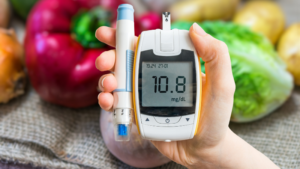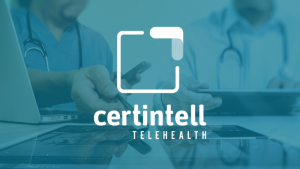The onset of diabetes is costly, in terms of money and health. Using telehealth to model other diabetes prevention programs helps offset these effects, without as much hassle.
The Center for Disease Control (CDC) launched The National Diabetes Prevention Program (DPP) in 2010 as part of an effort to prevent or slow the onset of diabetes in patients with pre-diabetes, therefore easing the burden. The DPP model was based on research that showed that for prediabetics who began regularly eating healthy and taking part in physical activity through a targeted “lifestyle change” program, decreased their risk of developing type 2 diabetes by 58 percent. That number increased to 71 percent for those 60 and older.¹
In 2017, CMS cemented its own flagship program based on the DPP, which was subsequently named the Medicare Diabetes Prevention Program, or MDPP.² This program presents a great opportunity for safety-net providers serving vulnerable and underserved populations who need more support to take control of their health. MDPP isn’t widespread, but there are steps providers can take to model a similar experience for patients so both sides can reap the benefits.
The Set-Up
The MDPP model has 1674 participants, participating through a little over 300 certified providers as of 2021.⁵ However, providers often face limitations in extending telehealth for MDPP services. Nonetheless, providers can expand access to care by mimicking the program model, which allows them to still get reimbursed, while providing an equitable chance at care that can transform health outcomes.
Some requirements for eligible participants include having a body mass index (BMI) of 25 or more (or 23 if self-identified as Asian), and meet one of the following blood test requirements:
- A hemoglobin A1c test with a value between 5.7 and 6.4%
- A fasting plasma glucose of 110-125 mg/dL
- A 2-hour plasma glucose of 140-199 mg/dL (oral glucose tolerance test)²
Providers can adopt similar requirements when choosing which patients to approach. Clinicians can achieve this by way of preventative care, such as helping patients secure these blood tests, or conducting Health Risk Assessments (HRAs) and Annual Wellness Visits (AWVs), both of which can provide reimbursement.
The MDPP program consists of 16 intensive core sessions, furnished over 12 months, that focus on behavioral change in physical activity and in eating habits and give the participant strategies for weight control. Those sessions are then followed by less intensive monthly follow-ups for the next year. The ultimate goal is to decrease weight by at least five percent.²
Modeling MDPP
To make the program accessible to a variety of patients, and ease the burden of a clinic’s workflow, providers should consider using a telehealth model so that more patients can have the opportunity to participate.
HIT Consultant lists five “convenient and clinically responsible” advantages to using telehealth in diabetes management³:
- Consistent Monitoring: Gives a better profile of a patient’s condition
- Support for Lifestyle Changes: Patients are particularly enabled through digital health tools
- Patient Engagement: By removing barriers to care, such as geographic isolation, or time constraints, patients can work their care into their schedules and make it work for them
- Depression Treatment: Individuals with diabetes are twice as likely to suffer from depression compared to those without diabetes. Low glucose can also create feelings of lethargy. Telehealth enables patients to be connected to psychologists and psychiatrists through Behavioral Health Integration (BHI). Their care will be well-coordinated for mind, body and spirit
- Cost Control: The health system is already being exacerbated. By effectively preventing the onset of diabetes, clinicians can see cost-reduction on a much larger scale.
A few digital health tools can help clinicians achieve these outcomes. Clinicians can build on telehealth to include the use of Remote Patient Monitoring (RPM) for their diabetic patients. RPM uses connected devices that automatically send vitals to a provider’s office when taken. The provider can then look at the data to see if any major changes are occurring, such as a spike in blood sugar.
Under the CDC’s DPP, “lifestyle coaches” furnish lessons and resources to participants to give them a targeted approach to care. Health coaches who furnish services through telehealth modality, such as a secure HIPAA-compliant portal, can service a patient wherever they are, removing any geographic barriers to care.
Advocates Push for Telehealth in MDPP
At the end of September 2020, a group of senators introduced bill S4709 in an effort to ensure coverage of MDPP services furnished through telehealth⁴. This bill shows how the effectiveness of telehealth in the prevention and management of diabetes is clear to many.
“It’s no secret that diabetes is a disease that has disproportionately affected minority communities across the country… To ensure that all individuals have the tools needed to combat this preventable disease, the Prevent Diabetes Act would help expand access to virtual classes under the existing Medicare Diabetes Prevention Program. This commonsense and cost-saving expansion will ensure that more Americans at-risk of developing diabetes who are living in either rural or medically underserved communities, can participate in this critical program that has been proven to delay the full onset of this preventable disease.” – Senator Mark Warner (VA), 2020.⁴
|
SOURCES:
¹ “CDC – About the Program – National Diabetes Prevention Program – Diabetes DDT.” CDC, 15 Nov. 2018, www.cdc.gov/diabetes/prevention/about.htm.
² “Medicare Diabetes Prevention Program (MDPP) Expanded Model | CMS Innovation Center.” CMS.Gov, 1 Apr. 2018, innovation.cms.gov/innovation-models/medicare-diabetes-prevention-program.
³ Smith, MD, Dean. “6 Benefits of Telemedicine in Managing the Diabetes Epidemic.” HIT Consultant, 30 Mar. 2020, hitconsultant.net/2020/03/30/6-benefits-of-telemedicine-in-managing-the-diabetes-epidemic/#.X5cGYC2ZNQK.
⁴ Wickland, Eric. “New Bill Would Add Telehealth to Medicare Diabetes Prevention Program.” MHealthIntelligence, 25 Sept. 2020, mhealthintelligence.com/news/new-bill-would-add-telehealth-to-medicare-diabetes-prevention-program.
⁵ Centers for Medicare & Medicaid Services. (2022). “Medicare Diabetes Prevention Program (MDPP) Expanded Model. cms.gov. https://www.cms.gov/priorities/innovation/data-and-reports/2022/mdpp-2ndannevalrpt-fg



